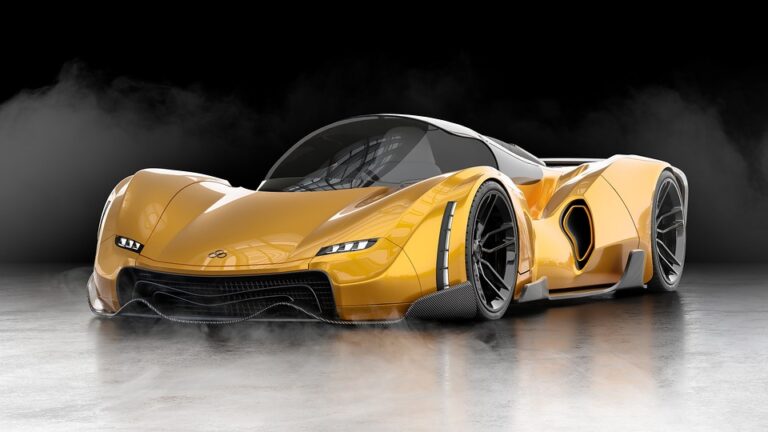Designing for Safety: How Automotive Designers are Enhancing Vehicle Protection
In recent years, the automotive industry has seen a significant shift towards prioritizing vehicle safety in design. As consumer demand for safer vehicles escalates, automotive designers have responded with innovative techniques that integrate advanced technologies and materials into the design process. This article delves into the strategies automotive designers are employing to enhance vehicle protection, ensuring that safety is at the forefront of automotive design.
The Importance of Safety in Automotive Design
Automotive design has evolved from mere aesthetics to encompass safety as a fundamental element. According to the National Highway Traffic Safety Administration (NHTSA), over 36,000 lives are lost in vehicle crashes annually in the United States alone. This alarming statistic underscores the necessity for designers to create vehicles that not only look good but also protect occupants and minimize accident-related injuries.
The Role of Technology in Safety Design
One of the most significant shifts in automotive design is the incorporation of technology. Designers are leveraging innovations such as:
-
Advanced Driver-Assistance Systems (ADAS): These systems include features like lane departure warnings, adaptive cruise control, and automatic emergency braking. By reducing human error and helping drivers make safer decisions, ADAS plays a critical role in vehicle safety.
-
Sensor Integration: Modern vehicles are equipped with a multitude of sensors that provide real-time data regarding obstacles, vehicle speed, and proximity to other vehicles, allowing for enhanced situational awareness.
- Predictive Safety Systems: Technologies that predict potential hazards and take preventive measures, such as tightening seatbelts or adjusting braking systems in anticipation of a collision, are becoming increasingly common.
Innovative Materials and Structural Design
Safety is not solely about technology; the materials and structure of a vehicle also greatly contribute to its protective capabilities. Designers are now using:
-
High-Strength Steel and Aluminum Alloys: These materials are renowned for their durability and energy-absorbing capacities. Their incorporation into vehicle frames and crumple zones enhances the structural integrity of vehicles during collisions.
-
Carbon Fiber Composites: Although more expensive, carbon fiber offers significant advantages in terms of strength-to-weight ratio. This results in lighter vehicles that do not compromise on safety specifications.
- Energy-Absorbing Technologies: Automotive designers are increasingly incorporating crumple zones—areas of a vehicle that deform and absorb energy during a collision. These zones help protect passengers by redirecting energy away from the cabin.
Ergonomic Design Enhancements
Safety also extends beyond structural integrity and technology; it encompasses how drivers and passengers interact with their vehicles. Ergonomic design plays a vital role in ensuring safety through features such as:
-
Adjustable Seating and Controls: Proper adjustment of seating positions and control accessibility can greatly enhance driver comfort and effectiveness, reducing distractions and the likelihood of accidents.
-
Intuitive Dashboard Layouts: A logically laid-out dashboard allows for quick access to controls, minimizing the time drivers need to take their eyes off the road.
- Improved Visibility: Designers are focusing on maximizing visibility through larger windshields, better side mirrors, and rearview cameras, ensuring drivers and passengers have a clearer view of their surroundings.
Real-World Applications: Case Studies in Safety Design
Several manufacturers have redefined safety design through their innovative approaches:
-
Volvo: Renowned for its commitment to safety, Volvo has pioneered several safety features, such as the three-point seatbelt and the introduction of the side-impact airbag. Their Vision 2020 project aims to design vehicles that will not be involved in serious accidents.
-
Tesla: Utilizing advanced robotics and AI, Tesla vehicles come equipped with sophisticated safety features that adapt to changing driving conditions. Their commitment to over-the-air updates ensures that safety improvements can be continuously integrated post-purchase.
- Toyota: With a focus on holistic safety, Toyota has implemented its Toyota Safety Sense system, which incorporates features such as Pre-Collision System, Lane Departure Alert, and Adaptive Cruise Control, enhancing driver capabilities in different environments.
Conclusion: The Future of Automotive Safety Design
As the automotive industry evolves, the focus on safety will undoubtedly continue to intensify. Automotive designers will play a pivotal role in shaping the future of vehicle protection. By integrating cutting-edge technologies, utilizing innovative materials, and enhancing ergonomic design, they are paving the way for safer roads.
Car manufacturers that prioritize safety will not only reduce fatalities and injuries but will also foster consumer trust and loyalty—an essential factor in a highly competitive market. For consumers, the message is clear: today’s automotive designs are not just about performance and aesthetics; they are also a commitment to the safety of every driver and passenger.
As we look to the future, automotive designers will undoubtedly continue to innovate, striving for a world where vehicle safety is not just an option but a standard.
Drive safe, and consider your vehicle’s safety features as you navigate the roads ahead! For more insights on automotive innovations, subscribe to our channel and stay updated.


